We tend to envision butterflies as delicate carefree creatures happily flitting from flower to flower and floating lazily through the sky to its next destination. But in reality, butterflies are quite tenacious in surviving the dangerous world they live in.
The fact is a butterfly’s life is not all that rosy. They are surrounded by predators from the time they begin their life as an egg, during the larva and pupa stage, and as an adult. Out of the hundreds of eggs one female will deposit during her lifetime, only a few survive to become adults. The butterfly’s ability to survive the many attacks it faces during its short life is what fascinates me about these iconic insects.
The adult butterfly uses many tactics to survive attacks from their many predators including birds, spiders, frogs, lizards, rats, dragonflies, hornets, wasps, and praying mantis.
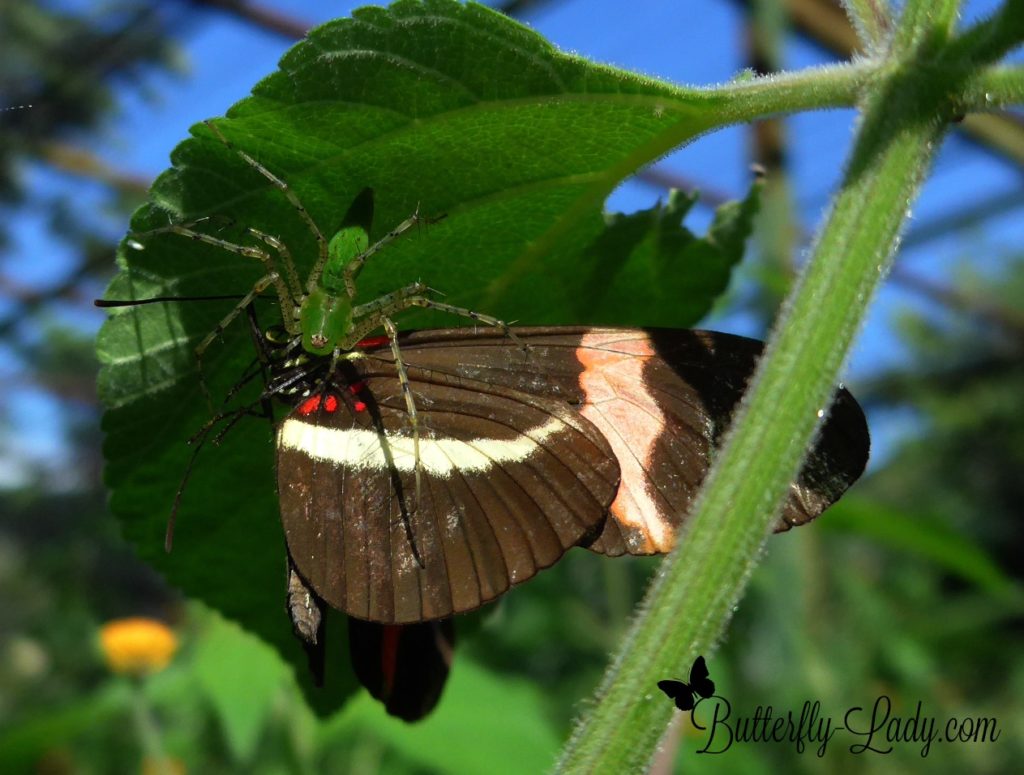
Poison
Monarchs lay their eggs on milkweed (Asclepias, spp.) As the caterpillars eat the milkweed leaves, they ingest chemicals called cardiac glycosides. The caterpillars sequester (hold on to) these toxins as they pupate, and the toxins are transferred to the adult butterflies. Birds or other creatures that eat the monarchs become sick, so they learn to leave both the butterflies and larvae alone.

Poisonous butterflies have flashy wings to reinforce the association between appearance and illness. For example, the bright orange colors of the Monarch are warning signs for vertebrates to stay away. Scientists call this aposematic coloration. Just as we humans learn that high-visibility vests and orange cones mean danger, birds and other predators learn that brightly colored monarchs are harmful to eat. Many different species of butterflies use aposematic coloration to protect themselves from predators.

Mimicry
Some butterflies simply fool their predators. As caterpillars, they feed on nontoxic plants, and when they become adult butterflies, they are perfectly good food. However, they have evolved wing colors and patterns that look almost exactly like those of the toxic species—a phenomenon called mimicry. Birds and lizards that have learned to avoid bold warning coloration and leave these imitators alone.
The Pipevine Swallowtail (Battus philenor) caterpillar feeds on the Pipevine plant (Aristolochia). The Pipevine contains Aristolochic Acids which accumulate in the caterpillar and are transferred to the adult butterfly (sound familiar). This acid is highly toxic. Many species of local butterflies mimic the dark colored Pipevine Swallowtail including the Spice Bush Swallowtail (Papillio troilus),the Red Spotted Purple (Limennitis arthemis), the Eastern Black Swallowtail (Papillio polyxenes), and and the the dark morph form of the female Tiger Swallowtail (Papilio glacucus).

Camouflage
Many butterflies protect themselves through camouflage. By folding up their wings, they reveal the undersides and blend in with their surroundings. Through this strategy, known as crypsis, they become nearly invisible to predators.
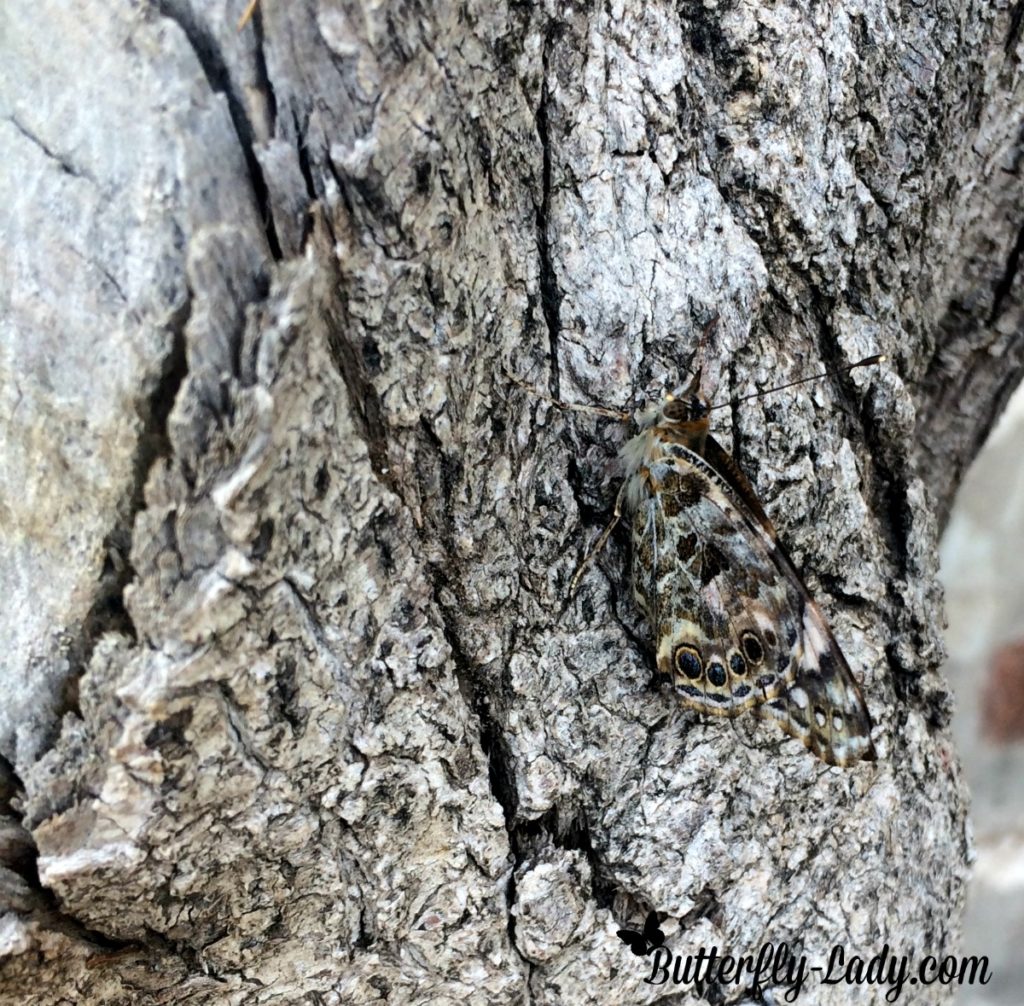

There are butterflies whose wings are designed to resemble vegetation or tree bark. Some species even have transparent wings. These adaptations serve as camouflage, making it easy for the insects to avoid predators by going unseen.
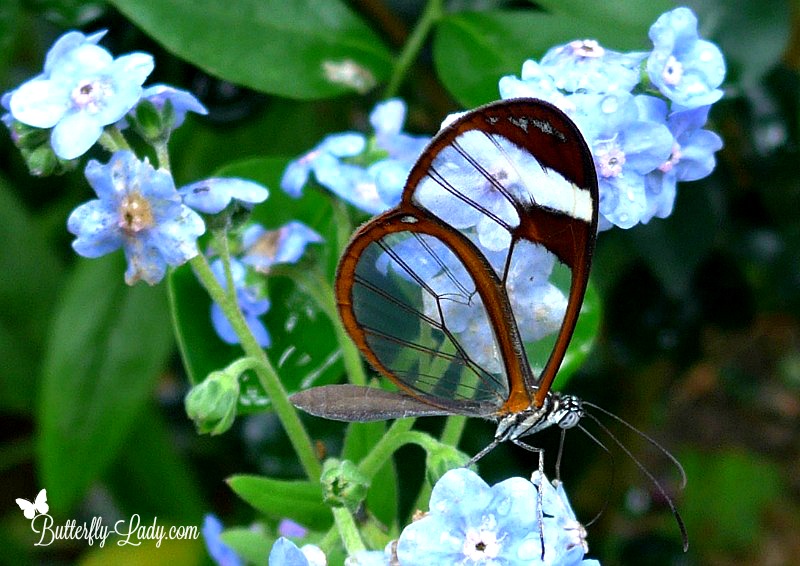
Flying Pattern
Butterflies are fast and erratic fliers. Their distinct fluttering motion makes it difficult for predators to determine where they will go next, making pursuit difficult.
Eyespots
There are some species that have enormous spots on their wings that resemble eyes. It’s thought that these eyespots mimic the eyes of predators, therefore, act as a deterrent to predators by making attackers think they are suddenly facing a larger and potentially dangerous animal.


Rather than preventing an attack entirely, another use for eyespots is to distract predators. The markings encourage an attacker to aim for parts of the insect’s body that aren’t vital for its survival – such as the edges of the wings. Attacks directed at the wing margins offer a higher chance of survival, as the insect would be able to survive with just a torn wing.
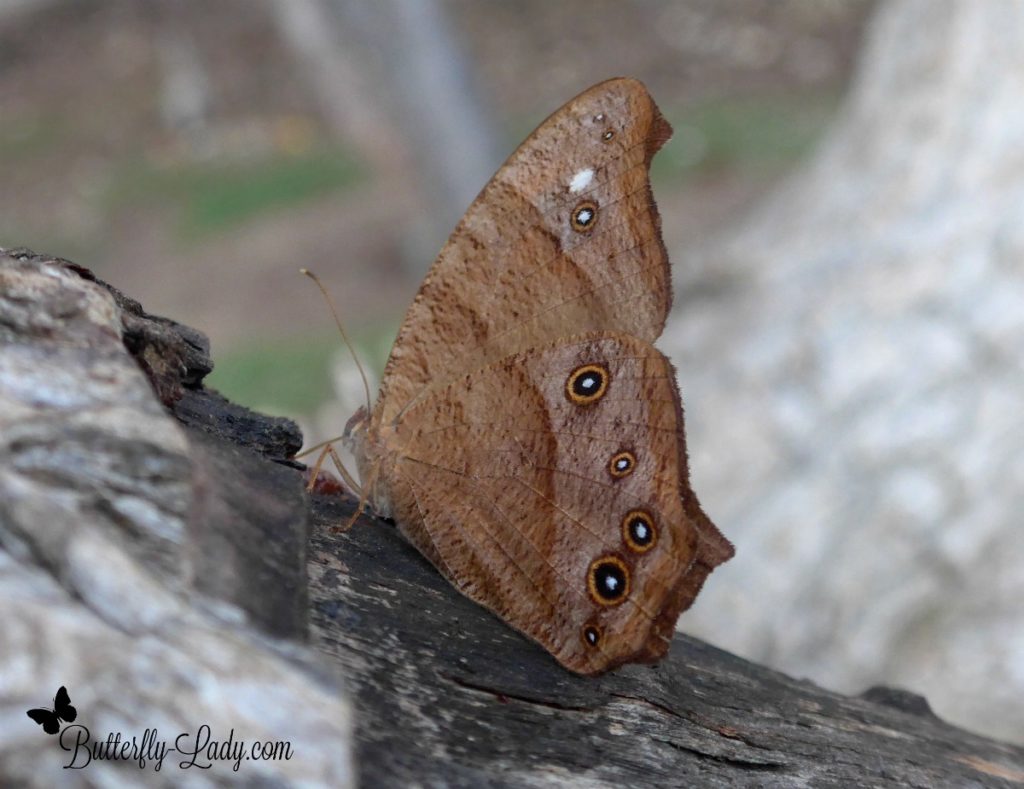
Scaled Wings and Wing Design
The scales that cover the wings of butterfly form some protection by making the wings slippery so when a predator tries to catch the butterfly, the butterfly can sometimes slip away. Most swallowtails have distinctive tails on their hind wings. These tail-like extensions of the hind wings can distract birds so that when the bird attacks it only is able to get a piece of the wing, allowing the butterfly to escape.

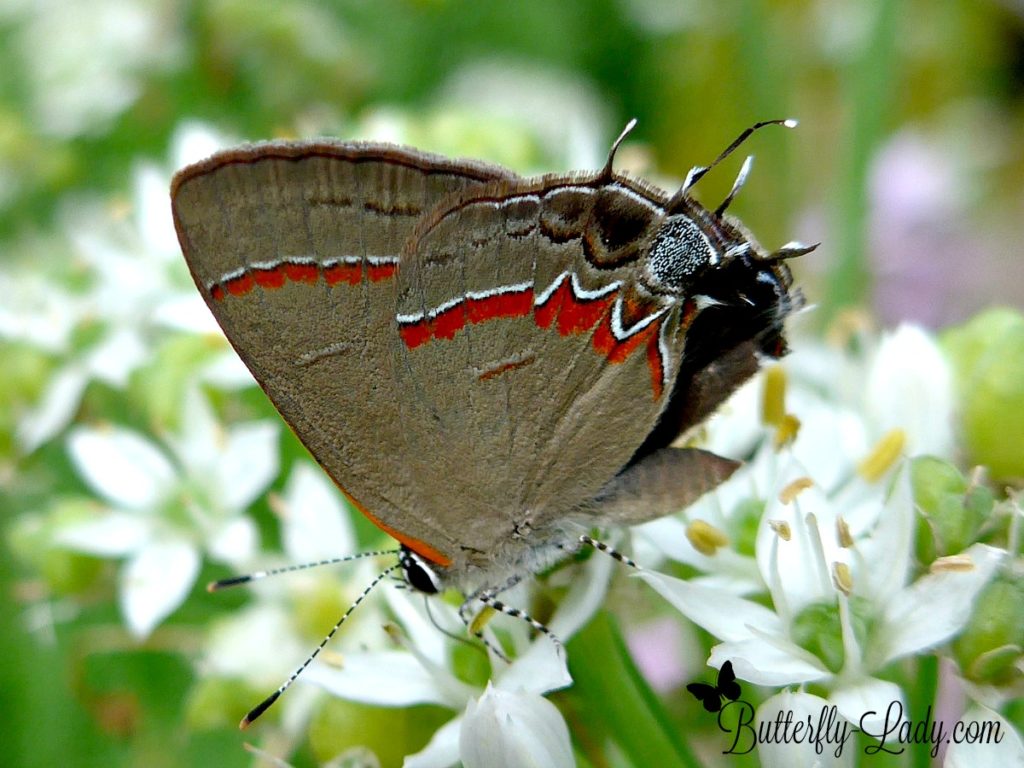
Mother Nature has unique ways to help protect these flying beauties!
